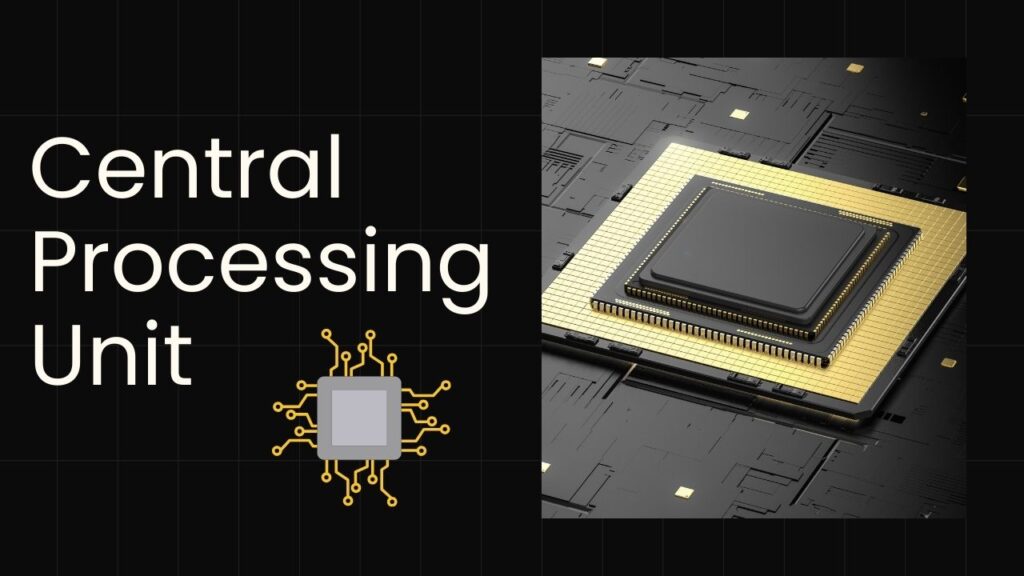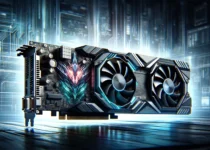How Does A CPU Work?
The Central Processing Unit (CPU) is commonly known as the computer’s neural center. The central processing unit (CPU) is responsible for carrying out instructions and conducting computations that enable your computer to operate apps and handle tasks. This article will provide an in-depth exploration of the CPU, including its fundamental components, operations, recent developments, and strategies for selecting an appropriate CPU based on individual requirements.
Comprehending the Fundamentals of a Central Processing Unit

The Central Processing Unit (CPU) is commonly known as the computer’s neural center. The processing and execution of instructions is a crucial function that is essential to the computing processes. An understanding of the functioning of the CPU is crucial for comprehending the operations of modern devices, ranging from wearables to thermostats.
Historical development
Central Processing Units (CPUs) have undergone substantial advancements in their shape, design, and implementation throughout history. Originally, central processing units (CPUs) were characterized by their big size and high power consumption. However, technological progress has resulted in CPUs becoming smaller, more energy-efficient, and more capable. Notwithstanding these alterations, their core functioning remains nearly unaltered.
Essential elements
A central processing unit (CPU) is composed of multiple essential components:
The Arithmetic Logic Unit (ALU) is responsible for executing logic and arithmetic procedures
Processor registers are responsible for providing operands to the Arithmetic Logic Unit (ALU) and storing the results of ALU operations.
The Control Unit is responsible for coordinating the actions of the Arithmetic Logic Unit (ALU) and registers to carry out the fetching, decoding, and execution of instructions.
Comprehending these elements is essential for comprehending the functioning and interplay of the CPU with other components of a computer system.
The Purpose and Capabilities of a Central processing Unit (CPU)
Instruction Cycle
The primary purpose of a computer processor is to carry out instructions and generate an output. The central processing unit (CPU) functions by following a sequential process called Fetch, Decode, and Execute. This process is essential for the functioning of the CPU. During the fetch stage, the central processing unit (CPU) receives an instruction from the computer’s memory. During the decode step, the instruction is interpreted. Ultimately, during the execution phase, it carries out the necessary operation.
Data Processing
Data processing refers to the manipulation and transformation of raw data into meaningful information through various computational techniques and algorithms.
The Central Processing Unit
The central processing unit (CPU) is responsible for executing a wide range of data processing processes, ranging from basic arithmetic calculations to intricate jobs. It facilitates the communication and operation of input and output devices. The CPU also retains data that is entered, intermediate outcomes during computation, and instructions. The CPU’s primary function is to ensure the smooth and efficient operation of all tasks.
The Control Unit and Arithmetic Logic Unit (ALU)
The Central Processing Unit (CPU) comprises a control unit responsible for interpreting program instructions and an Arithmetic Logic Unit (ALU) specialized in performing addition operations. By integrating the control unit and ALU, the CPU is capable of executing significantly more intricate programs compared to a basic calculator. The Central Processing Unit (CPU) may consist of multiple Arithmetic Logic Units (ALUs), which can be utilized to manage timers that facilitate the operation of the computer system.
The central processing unit (CPU) executes computations, performs logical comparisons, and transfers data at a frequency of billions of cycles per second. The computer operates by sequentially executing basic instructions, each prompted by a central clock signal that governs the entire system.
Central Processing Unit (CPU) Architecture and Design
Microarchitecture
Microarchitecture pertains to the specific implementation of a function set architecture (ISA) within a particular processor. It includes a range of design methods, such as pipelining, superscalar execution, and out-of-order execution. These strategies are designed to enhance the instruction-level parallelism (ILP) and overall performance of the CPU. Contemporary microarchitectures have a high level of complexity and are finely tuned to maximize performance for particular tasks.
Clock Speed and Performance
The clock speed of a CPU, measured in gigahertz (GHz), represents the number of cycles it can perform in one second. Although increased clock speeds typically result in improved performance, it is important to consider other elements such as microarchitecture and thermal design, as they also have significant impacts. Below is a concise comparison table:
Clock speed refers to the rate at which a computer’s central processing unit (CPU) can execute instructions. It is measured in hertz (Hz) and determines how quickly a CPU can perform calculations
| Central Processing Unit Model | Clock speed | Microarchitecture | Performance Rate |
| Processor model is Intel i7-9700K | 3.6 gigahertz | Coffee Lake | Elevated |
| Processor model is AMD Ryzen 5 3600 | 3.6 gigahertz | Zen | Elevated |
| Processor model is Intel i5-9600K. | 3.7 gigahertz | Coffee Lake | Average |
Multi-core processors
Multi-core processors consist of many processing units (cores) integrated into a single chip, enabling concurrent execution of tasks through parallel processing. This design greatly enhances the ability to do multiple tasks simultaneously and improves the efficiency of apps that utilize multiple threads. The widespread use of dual-core and multi-core processor architectures has brought about a significant transformation in the field of computing. Some examples include:
- The Core i9 series by Intel
- The product being referred to is AMD’s Ryzen Threadripper.
- IBM’s POWER9 processor
Multi-core processors are crucial in contemporary computing settings as they facilitate the efficient management of intricate and simultaneous operations.
Interfacing with Other Computer Components
Memory hierarchy
The concept of memory hierarchy refers to the organization and arrangement of several levels of memory in a computer system, based on their speed, capacity, and cost.
The central processing unit (CPU) has a close interaction with the memory hierarchy, which encompasses registers, cache, random-access memory (RAM), and secondary storage. Effective memory allocation is essential for achieving optimal CPU performance. The central processing unit (CPU) utilizes registers for the most efficient data retrieval, followed by multiple tiers of cache, and finally random access memory (RAM). Secondary storage, such as solid-state drives (SSDs) and hard disk drives (HDDs), is utilized to store data over an extended period.
Input/Output IO Operations
Input and output procedures are crucial for the central processing unit (CPU) to establish communication with peripheral devices. The central processing unit (CPU) utilizes buses to facilitate the transmission of data between itself and input/output devices. The management of these operations is carried out by controllers and ports, guaranteeing the accurate routing and processing of data.
Peripheral Communication
Peripheral Communication refers to the exchange of information between peripheral devices and a central processing unit (CPU) in a computer system.
Peripheral communication refers to the process by which the central processing unit (CPU) interacts with external devices, including keyboards, mice, printers, and other similar devices. This connectivity is enabled through a variety of ports and interfaces, such as USB, HDMI, and Ethernet. The CPU processes input from various devices and sends appropriate output signals, enabling smooth interaction between the user and the computer system.
The CPU’s capacity to effectively oversee and interface with other computer components is essential to the overall performance and usefulness of a computer system.
Contemporary Central Processing Unit (CPU) Technologies
Energy efficiency
Contemporary central processing units (CPUs) are engineered with a focus on power efficiency, effectively managing the trade-off between performance and energy usage. Both desktop and mobile devices rely heavily on this feature, as it plays a critical role in addressing concerns related to battery life and temperature control. Power-efficient central processing units (CPUs) contribute to the prolongation of battery life in laptops and the reduction of electricity expenses in data centers.
Thermal management
Efficient thermal management is crucial for preventing excessive heat buildup and ensuring the prolonged lifespan of the CPU. Heat management is achieved by the utilization of techniques such as dynamic voltage and frequency scaling (DVFS) and improved cooling technologies. Effective heat control enables CPUs to sustain optimal performance without experiencing throttling.
Enhanced Functionality
Contemporary central processing units (CPUs) are equipped with a multitude of sophisticated functionalities that improve both performance and user satisfaction. The following items are included:
- Hyper-Threading is a technology that enables simultaneous execution of several threads on each core, hence enhancing multitasking capabilities.
- Virtualization allows for the development of virtual machines, which improves flexibility and optimizes resource consumption.
- Security Features: The inclusion of Intel’s SGX and AMD’s SEV technology ensures robust security at the hardware level.
The incorporation of these sophisticated functionalities renders contemporary CPUs adaptable and proficient in managing a diverse array of tasks, spanning from gaming to professional demands.
Selecting the Appropriate CPU for Your Specific Requirements
Metrics for evaluating performance
When choosing a CPU, it is essential to take into account the performance parameters that are in line with your requirements. Higher clock speeds typically offer advantages for gamers, whereas jobs such as CAD and video editing tend to benefit from a higher CPU core count. Below are a few crucial performance parameters to take into account:
- Number of processor cores
- Processor clock speed
- Size of the cache
Graphics Processing Unit (GPU) that is integrated into a computer’s central processing unit (CPU).
Factors must be taken into account regarding compatibility
Compatibility with other components is crucial for your CPU, as it is a component of a bigger system. Verify the compatibility of your CPU with your motherboard socket and ensure that you have sufficient RAM and high-speed storage to efficiently supply data to your CPU. Furthermore, it is important to ensure that your CPU selection is well-matched with your graphics card to get optimal performance while also being mindful of cost-effectiveness.
Ensuring long-term viability
When selecting a central processing unit (CPU), it is prudent to consider the concept of future-proofing. Select a CPU that not only satisfies your present requirements but also possesses the capacity to accommodate future software upgrades and applications. Utilizing many processor units concurrently enables multitasking and can significantly enhance performance, rendering it a beneficial attribute for extended usage.
Having comprehended the function of a CPU, you are now more equipped to make a well-informed decision regarding your computer hardware. Refer to this guide for comprehensive information on the top-performing chips manufactured by AMD and Intel.
Conclusion
To summarize, the Central Processing Unit (CPU) serves as the core and intelligence of any computing device, coordinating the intricate sequence of tasks that enable our devices to operate smoothly. The CPU is responsible for facilitating effective communication and efficient task performance among all components of a computer, ranging from simple arithmetic operations to complex process management. Gaining comprehension of the functioning of a CPU not only emphasizes its crucial significance in contemporary technology but also emphasizes the remarkable progress that has been achieved in terms of computing capability and efficiency. As we progress in our innovation and advancement of more complex systems, the central processing unit (CPU) will continue to play a crucial role in shaping the future of technology.
FAQs
What is a CPU?
A CPU, or Central Processing Unit, is the primary component of a computer that carries out instructions and does calculations. It is often referred to as the “brain” of the computer.
How CPU Works?
A CPU, also known as the Central Processing Unit, is the main element of a computer responsible for carrying out the majority of the computational tasks within a computer system. The central processing unit (CPU) carries out instructions from programs and is commonly known as the computer’s “brain.”
What is the functioning mechanism of a CPU?
A central processing unit (CPU) operates by carrying out instructions that are retrieved from memory. These instructions provide the CPU with guidance on the specific actions to be executed on data that is stored in memory or registers. The control unit interprets these instructions and the Arithmetic Logic Unit (ALU) executes the required computations.
What are the key components of a CPU?
The essential elements of a central processing unit (CPU) consist of the Arithmetic Logic Unit (ALU), the Control Unit (CU), and several registers. The Arithmetic Logic Unit (ALU) is responsible for carrying out arithmetic and logical processes, while the Control Unit (CU) is responsible for overseeing and coordinating all operations within the Central Processing Unit (CPU).
What is the role of the control unit in a CPU?
The control unit (CU) in a central processing unit (CPU) governs the functioning of the processor. The processor’s instructions are communicated to the computer’s memory, ALU, and input/output devices, guiding how to respond.
What is the significance of clock speed in a CPU?
The relevance of the speed of the clock in a CPU lies in its ability to determine the number of instructions a processor can execute per second. The clock speed of a CPU, measured in gigahertz (GHz), represents the number of cycles it can execute in one second. Increased clock rates often result in a more rapid central processing unit (CPU), however additional parameters such as the number of cores and architecture also have substantial impacts on total performance.
What is a multi-core processor?
A processor with multiple cores is a singular computing component that consists of two or more autonomous processing units known as cores. These cores can execute several instructions concurrently, resulting in improved performance and efficiency, particularly for tasks that involve multitasking and processing in parallel.


